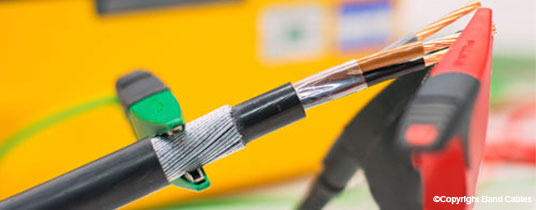Why do certain cables have braiding?
Cables are braided for one of two reasons, either to electrostatically screen the cable or to provide mechanical strength to the cable.
Applying a braid of metallic wires in the cable’s construction to achieve electrostatic screening and/or mechanical strength as opposed to applying metal tapes is because braiding maintains the cable flexibility. The design of the crossing, interwoven wires allows for bending and stretching of the braiding without buckling, folding or kinking in the way the tapes might do as a result of a flexible application.

Where the braiding is designed to provide an electrostatic screen to ensure signal integrity it is composed of an excellent electrical conductor such as copper, tinned copper or aluminium. If the braiding is designed to provide mechanical strength or toughness it can be composed of a number of different materials, such as steel wires, nylon strands or glass fibres.
When applied as a covering to the cable a braid can also serve to provide increased protection against hot surfaces, offering resistance to abrasion and cutting, or helping prevent attack by rodents (see how we helped design a cable for Network Rail with a glass fibre glass braid for precisely this reason). Braiding can be used in creating cable harnesses to group cables together.
People also ask
The term FTP stands for foil twisted pairs. FTP networking cables often support Ethernet LAN. The cables are designed and constructed with a twisted pair or multiple twisted pairs of cores...
Drain wires are used in cables in conjunction with a metallic shield to ensure effective grounding. The drain wire serves to complete an electrical circuit from the shield...
The plastic / polymers used in cable insulations are either thermoplastic or thermoset. Thermoplastic material is softened by heating and can be shaped...
Cable Portfolio
View our comprehensive range of power, data, control and instrumentation cables and accessories
Go